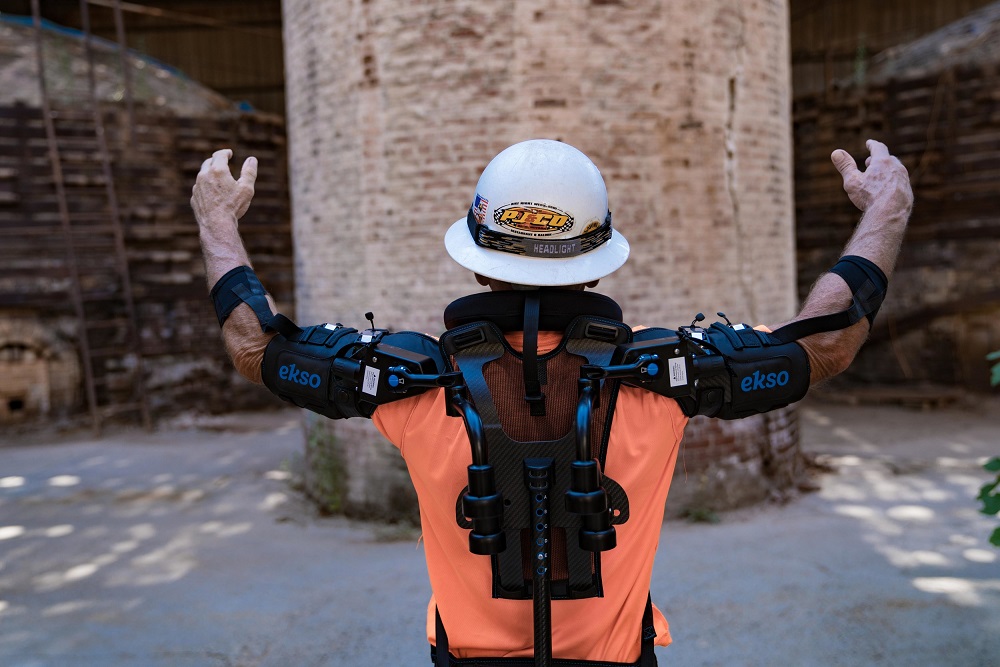As the construction industry faces growing demands for efficiency and safety, innovative technologies like exoskeletons are making a significant impact. Designed to enhance physical performance and reduce injury risks, wearable construction exoskeletons are transforming how workers handle heavy lifting and repetitive tasks. From powered suits that assist with strenuous movements to passive designs that relieve strain, exoskeleton suits for construction are revolutionizing the modern job site. In this article, we explore how these advanced tools are shaping the future of construction, providing insights into the various types of construction exoskeletons available today and their potential for improving worker health and productivity.
What Are Exoskeletons?
An exoskeleton is a wearable mechanical structure designed to assist and enhance human movement, particularly in tasks that require significant strength or endurance. These wearable construction exoskeletons are specifically designed to reduce physical strain on workers, improving their performance by providing additional support during heavy lifting or repetitive tasks. Whether passive or powered, an exoskeleton suit for construction can reduce fatigue and prevent injuries by distributing the physical load more effectively.
A Brief History of Exoskeletons and Their Applications
The concept of exoskeletons first emerged in the 1960s with early prototypes developed for military use. These suits aimed to amplify human strength, but they were often too bulky or impractical for real-world applications. Over time, advancements in robotics, materials, and sensor technologies led to the creation of more practical designs. Today, exoskeletons for construction are increasingly used in various industries, including healthcare, manufacturing, and construction.
In particular, exoskeletons in construction offer significant benefits by reducing the physical demands on workers. For example, construction worker exoskeletons provide enhanced strength and endurance, allowing workers to lift heavy objects or maintain awkward positions for extended periods without suffering from fatigue or strain. These devices are becoming essential in construction as the industry seeks to improve workplace safety and efficiency.
Technological Advancements and Their Potential in the Construction Industry
In recent years, construction exoskeletons for sale have become more accessible due to advancements in battery technology, lightweight materials, and machine learning algorithms that allow these devices to adapt to the user’s movements. A wearable construction exoskeleton can now provide real-time support based on the specific tasks being performed, making it a valuable tool on construction sites.
For example, a construction exoskeleton suit can help workers with lifting heavy materials or performing overhead tasks without overexertion. As these technologies continue to develop, the adoption of exoskeletons for construction workers is expected to increase, potentially revolutionizing how manual labor is performed on construction sites.
The Importance of Exoskeletons in the Construction Industry
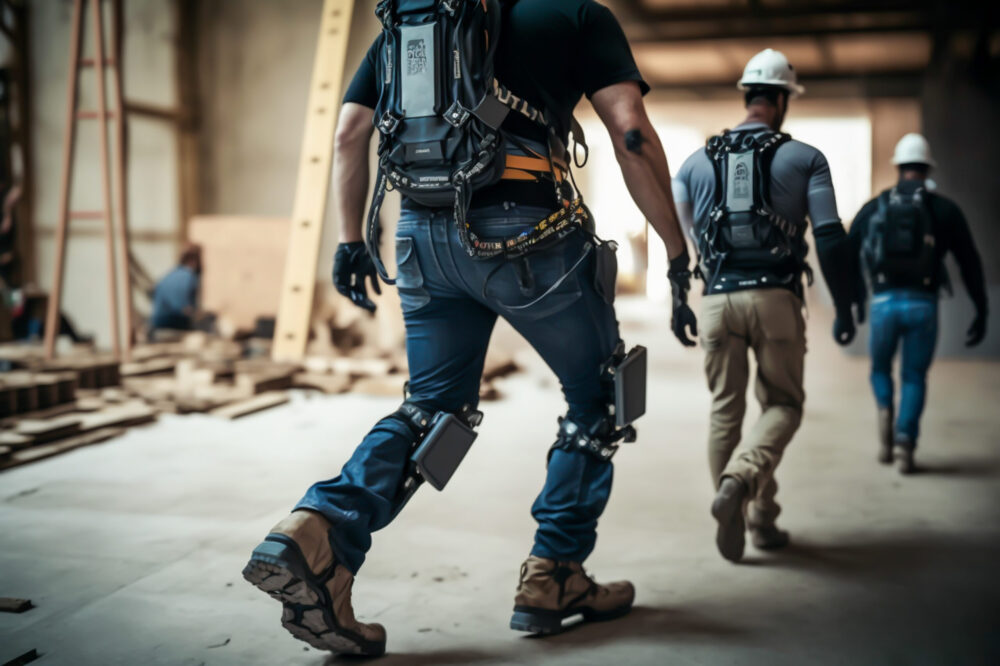
The construction industry demands physically challenging work, such as heavy lifting, repetitive tasks, and awkward body positions, which often lead to fatigue and long-term health issues. Exoskeletons in construction address these challenges by providing mechanical support, reducing the physical strain on workers. This technology enables construction professionals to work more efficiently and with less risk of injury, thereby improving both productivity and safety on-site. Companies are increasingly integrating exoskeleton suits for construction to help manage the growing physical demands of modern construction projects.
Key Benefits of Exoskeletons for Construction Workers
Exoskeletons for construction workers provide several advantages. Most notably, they help reduce the risk of musculoskeletal injuries, which are common in the construction industry due to heavy lifting and repetitive movements. A wearable construction exoskeleton offers support for the back, shoulders, and legs, allowing workers to handle physically demanding tasks with less effort. These devices also enhance productivity by enabling workers to complete tasks faster and more precisely, without the physical limitations that typically come with fatigue.
The use of exoskeletons can also extend the working lifespan of construction laborers by minimizing long-term physical strain. By using construction exoskeleton suits, workers can avoid chronic injuries, stay healthier, and remain active in physically demanding roles for longer.
Examples of Exoskeleton Use on Construction Sites
Many exoskeleton models are now widely used on construction sites. For example, the AUXIVO LiftSuit is a lightweight, passive exoskeleton that provides back support to reduce muscle strain during lifting tasks. This suit is designed specifically for industries like construction, where heavy lifting is a daily requirement. It helps workers lift objects with reduced effort, making it a practical and cost-effective solution for construction companies.
Another example is the Paexo Shoulder, which assists workers in performing overhead tasks without overloading their shoulders. The EksoZeroG arm is another tool used on construction sites to support workers who operate heavy tools, reducing strain on their arms and shoulders.
With more construction exoskeletons for sale, such as the AUXIVO LiftSuit, these devices are becoming more accessible and widely adopted, offering companies innovative solutions to improve worker safety and efficiency. As the technology evolves, we can expect to see even more advanced models entering the market.
Exoskeleton for Construction Workers
Exoskeletons for construction workers are specifically designed to alleviate the physical strain that comes from heavy lifting, repetitive motions, and awkward postures commonly encountered on job sites. These wearable devices, such as the AUXIVO LiftSuit or the EksoVest, help redistribute weight and support key muscle groups like the back, shoulders, and legs. By providing mechanical assistance, exoskeletons in construction reduce the risk of musculoskeletal injuries, making it easier for workers to handle demanding tasks without excessive stress on their bodies.
For example, during tasks that involve lifting heavy objects, a construction exoskeleton suit supports the lower back and legs, allowing workers to maintain proper posture and avoid overexertion. This is particularly useful in reducing the risk of chronic back pain, which is common in the construction industry.
Boosting Productivity and Reducing Injuries
The introduction of exoskeleton suits for construction has shown significant improvements in both worker productivity and safety. With the physical strain reduced, workers can complete tasks more efficiently and with less fatigue, allowing for longer periods of productivity without risking injury. The use of a construction worker exoskeleton also helps lower the incidence of workplace injuries, particularly those related to repetitive strain and heavy lifting, which can lead to costly medical expenses and downtime.
Studies and real-world trials have demonstrated that the use of wearable construction exoskeletons not only improves physical well-being but also reduces overall fatigue by up to 30%. As a result, construction companies are reporting fewer injury-related absences and greater on-site efficiency.
Reviews and Real-World Examples of Exoskeletons in Construction
Feedback from workers and companies that have implemented exoskeletons for construction has been overwhelmingly positive. Many construction workers report feeling less fatigued at the end of the day and notice a significant reduction in discomfort, particularly in their lower back and shoulders.
For instance, workers who have used the AUXIVO LiftSuit in trials noted a dramatic reduction in lower back strain during lifting tasks. Similarly, companies that have integrated the EksoVest have seen a decrease in work-related injuries and an increase in task completion times for overhead work. These real-world examples demonstrate the value of construction exoskeletons in enhancing both safety and productivity on the job site.
Construction worker exoskeletons are proving to be a valuable asset for the industry, providing both short-term relief from physical strain and long-term benefits in reducing injury risks. As these technologies continue to evolve, we can expect even broader adoption across construction sites worldwide.
Wearable Exoskeleton for Construction
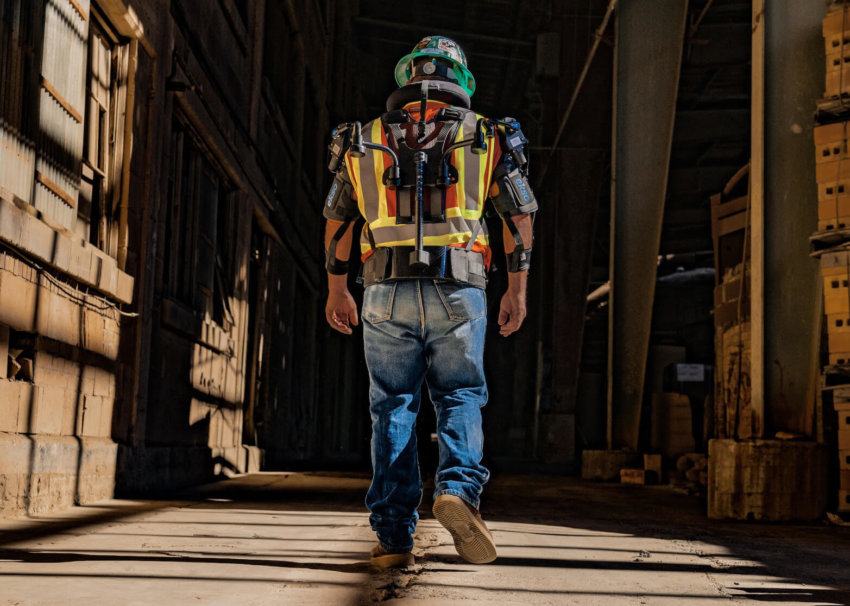
Wearable construction exoskeletons offer numerous benefits to workers on job sites. These devices provide physical support by redistributing the weight and strain typically placed on muscles and joints during heavy lifting and repetitive tasks. For instance, they can reduce the load on the lower back and legs, allowing workers to carry out demanding tasks with less fatigue and a lower risk of injury. Wearable construction exoskeletons also increase endurance, enabling workers to remain productive for longer periods without experiencing physical exhaustion.
Moreover, by enhancing strength and stability, these exoskeletons allow workers to perform tasks that would otherwise be beyond their physical limits. For example, lifting heavy objects overhead or maintaining awkward postures for extended periods becomes significantly easier and safer with the assistance of a construction exoskeleton suit.
How Wearable Exoskeletons Are Transforming Heavy Physical Labor
The introduction of exoskeleton suits for construction is transforming how workers approach physically demanding tasks. Traditionally, heavy lifting and prolonged physical labor lead to fatigue, injury, and even long-term health issues. However, with the aid of wearable exoskeletons, workers can perform these tasks more efficiently and with reduced physical strain.
For example, companies that have implemented wearable exoskeletons report significant reductions in workplace injuries, particularly those related to musculoskeletal disorders. These devices allow workers to adopt better posture, reduce overexertion, and minimize the risk of repetitive strain injuries. By reducing fatigue, workers are able to maintain a higher level of productivity throughout the day.
Compatibility with Other Work Tools
Wearable exoskeletons for construction are designed to be compatible with a wide range of construction tools and equipment. Many models are lightweight and flexible, allowing workers to wear them comfortably while operating machinery or using hand tools. Devices like the EksoZeroG arm and AUXIVO LiftSuit are specifically designed to integrate seamlessly with existing work processes.
These construction exoskeleton suits do not impede movement or reduce mobility, making it easy for workers to continue using the tools they are familiar with while benefitting from the physical support of the exoskeleton. As the technology advances, exoskeletons are becoming increasingly adaptable, allowing them to be used across various industries and work environments.
Construction of Exoskeletons for Construction
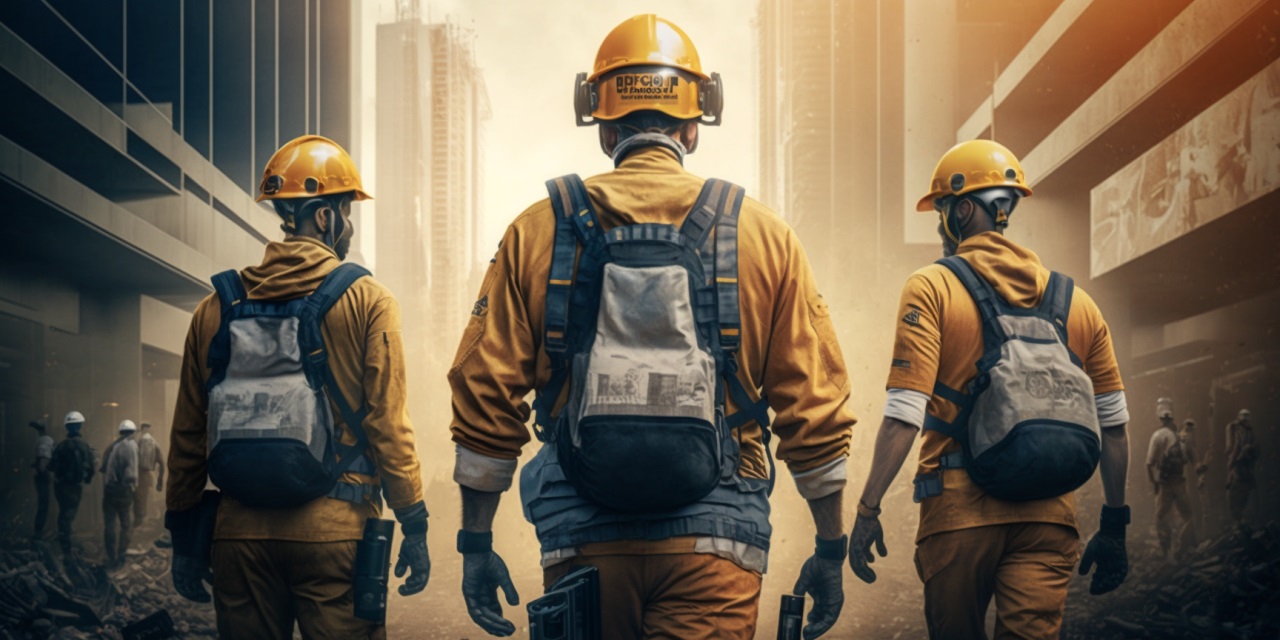
Exoskeleton suits used in construction are designed with specific ergonomic features to support the physically demanding tasks common in this industry. The key components of exoskeleton construction include mechanical frameworks that assist the body’s natural movements, typically focusing on supporting the back, legs, and arms. These exoskeletons can either be passive, relying on spring-loaded systems to provide mechanical assistance, or active, using powered motors and sensors to enhance movement.
The materials used in construction worker exoskeletons are typically lightweight and durable to ensure both comfort and longevity in challenging environments. For example, the frames are often made from high-strength aluminum or carbon fiber, which offers robustness without weighing the user down. Additionally, many suits are designed to be worn over regular work gear and include adjustable straps for a secure fit, ensuring compatibility with personal protective equipment (PPE).
Differences Between Passive and Active Exoskeletons
When considering exoskeleton suits for construction, it is important to understand the distinction between passive and active systems:
- Passive Exoskeletons: These rely on mechanical elements such as springs or elastomers to assist with motion. They do not require batteries or external power sources, making them simpler, lighter, and more affordable. Passive exoskeletons are ideal for tasks that involve repetitive lifting or sustained postures. For example, the AUXIVO LiftSuit is a passive exoskeleton that helps reduce back strain by redirecting the load from the lower back to the hips.
- Active Exoskeletons: These are powered by motors, sensors, or hydraulics and are typically more advanced. Active exoskeletons can provide more precise assistance by adjusting support based on the worker’s movements in real-time. These systems are more suited to tasks that involve heavy lifting or where fine motor control is necessary. However, they tend to be heavier, more expensive, and require regular charging.
How to Choose the Right Exoskeleton for Construction Tasks
Selecting the right construction exoskeleton suit depends on the specific demands of the job and the needs of the workers. Key factors to consider include:
- Type of Task: For repetitive lifting or static postures, passive exoskeletons are often sufficient. For more dynamic tasks involving varied movements or the handling of heavy tools, an active exoskeleton may be more suitable.
- Weight and Comfort: The exoskeleton should be lightweight enough to wear for long periods without causing discomfort. Comfort is critical, especially if the worker needs to move between tasks frequently or wear the suit throughout the entire workday.
- Compatibility with Tools: Ensure that the exoskeleton is compatible with the tools used on-site. Many wearable construction exoskeletons are designed to integrate seamlessly with heavy machinery, while others are more suited to manual labor.
- Budget and Maintenance: Passive exoskeletons tend to be more cost-effective and require less maintenance, while active systems, though more powerful, can involve higher upfront and ongoing costs for maintenance and energy.
By evaluating the specific needs of the workforce and the demands of the construction tasks, companies can choose the most effective exoskeleton solution to improve safety, reduce fatigue, and enhance productivity.
Exoskeleton Suits for Construction Workers
The development of exoskeleton suits for construction has seen significant advancements, with various models now available to assist workers in physically demanding tasks. These range from passive designs that offer mechanical support to advanced, powered exoskeletons. Notable models include the EksoVest, which is used for overhead work, and the AUXIVO DeltaSuit, which provides passive support for the entire body, particularly for the lower back and legs during lifting tasks. These innovations are helping reduce strain and prevent injuries on construction sites, improving worker safety and efficiency.
Top Exoskeletons for Different Types of Construction Work
Choosing the right exoskeleton depends on the specific demands of the construction work:
- For Heavy Lifting: The AUXIVO DeltaSuit and the SuitX BackX are passive exoskeletons designed to redistribute the strain from the lower back to the hips, making them ideal for tasks involving repetitive heavy lifting. They help minimize the risk of injury by alleviating physical pressure.
- For Overhead Work: The EksoVest is a widely-used exoskeleton that provides arm and shoulder support for workers performing overhead tasks. It helps to maintain posture and reduce fatigue by assisting with the lifting of objects above shoulder height.
- For General Support: The Levitate AIRFRAME offers comprehensive body support for a range of construction activities. It allows workers to handle various tasks, from heavy lifting to overhead work, with improved posture and reduced physical stress.
Recommendations for Choosing an Exoskeleton Suit for Specific Tasks
When selecting a construction exoskeleton suit, it’s important to match the exoskeleton’s capabilities to the specific job requirements:
- Type of Work: For repetitive lifting tasks, passive exoskeletons such as the AUXIVO DeltaSuit provide ideal support. For overhead activities, an active exoskeleton like the EksoVest is better suited.
- Mobility Needs: For workers who need to transition between tasks or move around the construction site frequently, lightweight models like the Levitate AIRFRAME offer flexibility without compromising on support.
- Budget and Maintenance: Passive exoskeletons like the AUXIVO DeltaSuit are generally more cost-effective and require less maintenance, making them a good entry-level solution for companies looking to enhance worker safety without incurring high operational costs.
By assessing the type of tasks, mobility requirements, and available budget, companies can choose the best exoskeleton solution for their construction workforce, ensuring increased productivity and reduced risk of injuries on the job.
Sale of Exoskeletons for Construction
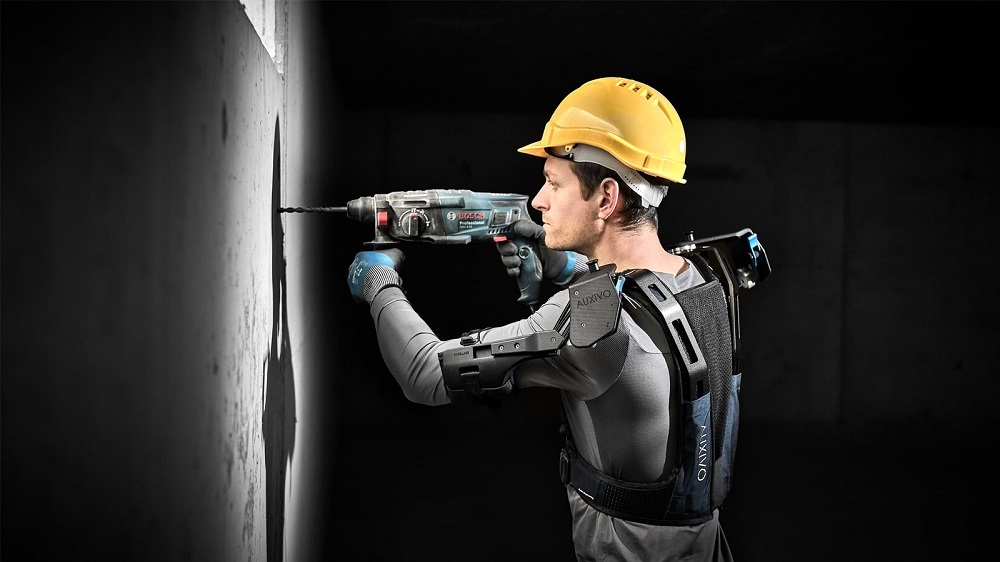
One of the leading places to purchase exoskeletons for construction workers is AllCanadaSafety.com. This website specializes in safety equipment and offers a range of exoskeletons suitable for various construction tasks. It provides detailed product descriptions and specifications to help buyers make informed decisions.
Overview of Suppliers and Manufacturers of Exoskeletons
The market for construction exoskeletons includes several reputable suppliers and manufacturers. Key players include:
- Ekso Bionics – Known for their EksoVest and EksoNR, these products are widely used in construction and rehabilitation settings, offering powered and passive support.
- AUXIVO – Their DeltaSuit provides passive support for heavy lifting, making it a popular choice among construction workers. AUXIVO focuses on user-friendly designs that enhance productivity while reducing fatigue.
- SuitX – This company offers the BackX and other models designed to reduce physical strain for construction workers. They emphasize ergonomics and safety in their products.
- Levitate Technologies – Their AIRFRAME exoskeleton is aimed at providing overall body support and is highly regarded for its comfort and versatility across various job functions.
Prices for Construction Exoskeletons and Available Models
The price of construction exoskeletons can vary significantly depending on the type, features, and manufacturer:
- Passive Exoskeletons: Models like the AUXIVO DeltaSuit and SuitX BackX typically range from $5,000 to $10,000. These options are more affordable and are designed to assist with repetitive lifting and posture support.
- Active Exoskeletons: Advanced models such as the EksoNR can range from $10,000 to $30,000 or more, depending on their complexity and features. These suits provide powered assistance and are often used in environments that require heavy lifting and sustained use.
- Budget Options: Some manufacturers offer entry-level models or rental options that can help companies test exoskeletons without a significant initial investment.
In summary, companies looking to purchase exoskeletons for construction work can find various options through suppliers like AllCanadaSafety.com and other manufacturers that specialize in ergonomic and safety equipment. Prices vary, and it’s essential to consider the specific needs of the workforce when making a purchase. For more detailed information, including specific product listings, you can visit AllCanadaSafety.com.
The Future of Exoskeletons in Construction
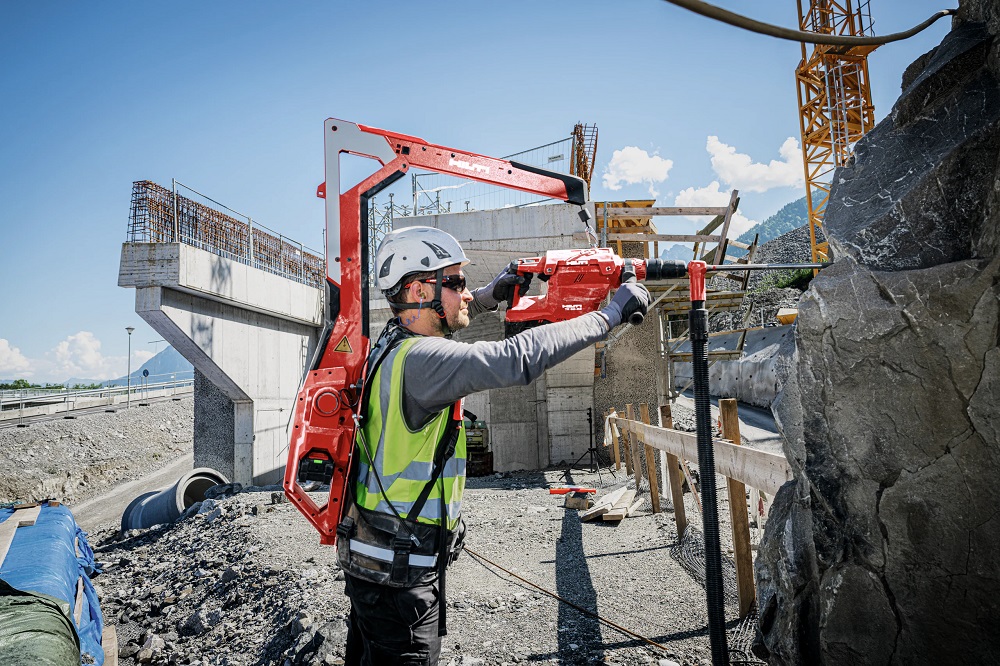
The future of exoskeletons in construction is promising as technological advancements continue to emerge. Key developments may include:
- Integration of AI and Machine Learning: Future exoskeletons could leverage AI to adapt dynamically to a worker’s movements in real-time, providing optimized support tailored to individual needs and specific tasks. This capability could enhance user comfort and effectiveness while minimizing fatigue.
- Enhanced Mobility and Flexibility: Ongoing research aims to produce more flexible designs that allow workers to move freely on the job site. The use of lightweight materials and compact power sources will contribute to creating exoskeletons that are less cumbersome and easier to wear for longer periods.
- Customization Options: Manufacturers are likely to introduce customizable exoskeletons tailored to specific industries or individual worker preferences, which would enhance usability across a variety of tasks.
Impact of Exoskeletons on Workflow Changes in Construction
The adoption of exoskeletons in construction workflows is expected to bring about transformative changes:
- Increased Productivity: By alleviating physical strain, exoskeletons enable workers to perform tasks for extended periods without fatigue. This boost in endurance can lead to enhanced efficiency and productivity on construction sites.
- Improved Safety: The implementation of exoskeletons can significantly decrease the risk of musculoskeletal injuries, which are common in the construction sector. This reduction could result in lower injury rates and associated costs for employers.
- Changing Workforce Dynamics: As exoskeleton technology becomes more prevalent, it may shift the required skill sets within the workforce, emphasizing the need for training in the effective use and maintenance of these advanced tools.
New Developments and Innovations in Exoskeleton Technologies
Innovative projects and products are currently under development:
- Advanced Sensors and Feedback Systems: New exoskeleton designs are incorporating integrated sensors that provide real-time feedback on worker posture and body mechanics, facilitating immediate adjustments to enhance ergonomics.
- Collaborative Robots (Cobots): Some companies are investigating the combination of exoskeletons with collaborative robots that assist workers directly in their tasks. This fusion of human labor and robotic precision could significantly optimize work processes.
- Research Initiatives: Ongoing research is focused on discovering new materials and technologies that could lead to more efficient power sources for active exoskeletons, thereby enhancing their functionality while reducing costs.
In summary, the future of exoskeletons in construction is set for substantial advancements that will influence productivity, safety, and overall workforce dynamics. As these technologies evolve, they are likely to play a pivotal role in shaping the construction industry’s future.
Conclusion
Benefits of Using Exoskeletons in Construction
Exoskeletons present a range of significant advantages for the construction industry. These wearable technologies primarily enhance worker safety by reducing the risk of musculoskeletal injuries, which are prevalent in a physically demanding environment. By alleviating physical strain, exoskeletons enable workers to perform tasks more efficiently and for longer periods, thereby increasing overall productivity. Additionally, the ergonomic support provided by exoskeletons can lead to improved worker morale and job satisfaction, as employees feel less fatigued and more capable in their roles.
How Exoskeletons Could Transform the Construction Industry
Looking ahead, the potential for exoskeletons to revolutionize the construction industry is substantial. As technology advances, we can anticipate even more sophisticated designs that integrate artificial intelligence, enhancing adaptability and user experience. The growing acceptance of exoskeletons could also lead to new industry standards and practices that prioritize worker health and safety.
Furthermore, as construction projects become increasingly complex, the integration of exoskeletons may facilitate more efficient project management and execution. By streamlining workflows and reducing injury-related downtimes, exoskeletons could contribute to a more resilient construction sector that meets the demands of modern infrastructure development.
Exoskeletons are poised to significantly impact the construction industry, improving safety, productivity, and worker satisfaction while paving the way for future innovations that could redefine how construction tasks are performed.

